Today Current Affairs: 17th November 2022 for UPSC IAS exams, State PSC exams, SSC CGL, State SSC, RRB, Railways, Banking Exam & IBPS, etc
Table of Contents
East Asia Summit:
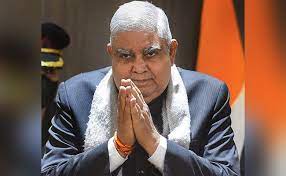
Vice President Jagdeep Dhankhar recently addressed the East Asia Summit.
- Beginning in 2005, 16 participating countries comprised this grouping, with their first meeting in Kuala Lumpur, Malaysia.
- These members were the 10 ASEAN countries, Australia, China, India, Japan, New Zealand, and the Republic of Korea.
ASEAN’s 10 member countries are Brunei, Cambodia, Indonesia, Laos, Malaysia, Myanmar, the Philippines, Singapore, Thailand, and Vietnam. - The United States and the Russian Federation joined at the 6th East Asia Summit in 2011.
- The EAS is an ASEAN initiative and refers to the annual Meeting of Heads of States/Governments of these countries, where they are able to discuss common concerns and interests.
- Its creation was based on the idea of enhancing cooperation among East Asian countries and those in the neighbouring regions.
- Six priority areas of cooperation were identified – environment and energy, education, finance, global health issues and pandemic diseases, natural disaster management, and ASEAN Connectivity.
- In the past, the issues of claims over the South China Sea, the United Nations Convention on the Law Of the Sea, terrorism, the actions of North Korea and the conflict situation in Myanmar have been discussed by the countries.
- This year marks the 30th anniversary of ASEAN-India relations and is being celebrated as the ASEAN-India Friendship Year.
- Vice President recently announced an additional contribution of USD 5 million to the ASEAN-India science and technology fund to enhance cooperation in sectors of public health, renewable energy and smart agriculture.
Artemis 1 : Recent Updates

The National Aeronautics and Space Administration (NASA) of the United States is set to launch the Artemis-1 mission, which will take humans back to the Moon.
- It is only a lunar Orbiter mission even though, unlike most Orbiter missions, it has a return-to-Earth target — it is intended to lay the foundations for more complex and ambitious missions.
- The CubeSats it will carry are equipped with instruments meant for specific investigations and experiments, including searching for water in all forms and for hydrogen that can be utilised as a source of energy.
- Biology experiments will be carried out, and the impact of deep space atmosphere on humans will be investigated through the effect on dummy ‘passengers’ on board Orion.
- The Space Launch System (SLS) rocket, the most powerful ever built, will also be on test for its potential for more ambitious missions in the future.
- It’s been a half century since the six Apollo human Moon landings between 1969 and 1972.
- Since then, spacecraft have travelled beyond the solar system, exploratory missions have probed Mars, Jupiter, and Saturn, more than 500 astronauts have made return trips to space, and permanent space labs have been set up.
India’s Urban Infrastructure : World Bank Report
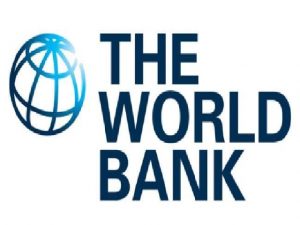
According to the World Bank, India would need to invest $840 billion over the next 15 years, that is, an average of $55 billion each year, to meet the demands of its fast-growing urban population.
- Its latest report, titled ‘Financing India’s Urban Infrastructure Needs: Constraints to Commercial Financing and Prospects for Policy Action’, puts forth the urgent requirement to leverage greater private and commercial investments to meet the emerging financial gaps.
Highlights:
- Financing on a repayable basis can be done either through debt, private lending or public-private partnership investments.
- These require a recurrent source of revenue to meet obligations, thus, mandating raising adequate resources.
- Much of the urban infrastructure in India is financed by tied intergovernmental fiscal transfers, that is, vertical and horizontal transfer of finance for attaining certain objectives sub-nationally.
- Of the finances needed to fund capital expenditures for Indian cities, 48% is derived from State governments, 24% from the Central government and 15% from urban local bodies’ own surplus.
- The rest includes public-private partnership (3%), commercial debt (2%) and loans from Housing and Urban Development Corporation, or HUDCO (8%).
- The report argues that the overall funding base to raise commercial revenues “appears to be low” owing to weak fiscal performance of cities and low absorptive capacity for execution of projects.
- The report states that city agencies have been unable to expand their resource and funding base to support private financing for services such as water supply, sewerage networks and bus services, as they are highly subsidised.
What Is Vostro Account?

The Reserve Bank of India (RBI) has allowed the opening of nine special vostro accounts in two Indian Banks (UCO Bank and IndusInd Bank) for the settlement of payments in rupee for trade between India and Russia.
- Russia’s two largest banks — Sberbank and VTB Bank — are the first foreign lenders to have received approval from the RBI towards settling international trade transactions in rupee.
- A Vostro account is just another name for a Nostro account. It is an account held by a bank that allows the customers to deposit money on behalf of another bank.
Nostro account:
- A Nostro account is an account held by a bank in another bank.
- It allows the customers to deposit money in the bank’s account in another bank. It is often used if a bank has no branches in a foreign country.
- The main difference between a deposit account and a Nostro account is that the former is held by individual depositors while foreign institutions hold the latter.
Vostro account:
- A Vostro account is just another name for a Nostro account.
- It is an account held by a bank that allows the customers to deposit money on behalf of another bank.
- A Nostro account is a Vostro account for the bank that opens the account.
- If a person deposits money in the Vostro account, it will be transferred to the account holder’s bank.
Climate Change And Global Health : Lancet Countdown Report
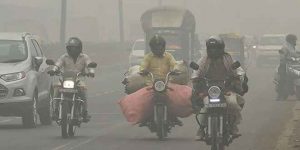
According to the Lancet Countdown report on Health and Climate Change: Health at the Mercy of Fossil Fuels, reliance on fossil fuels is increasing the risk of disease, food insecurity and other illnesses related to heat.
Findings of the Report:
- Climate change affects the social and environmental determinants of health — clean air, safe drinking water, sufficient food and secure shelter.
- Rapidly increasing temperatures exposed people, especially vulnerable populations (adults above 65 years old and children younger than one) to 3.7 billion more heatwave days in 2021 than annually in 1986–2005.
- The changing climate is affecting the spread of infectious disease, raising the risk of emerging diseases and co-epidemics.
- For instance, it records that coastal waters are becoming more suited for the transmission of Vibrio pathogens.
- The number of months suitable for malaria transmission has increased in the highland areas of the Americas and Africa.
- The World Health Organization (WHO) has predicted that between 2030 and 2050, climate change is expected to cause approximately 2,50,000 additional deaths per year, from malnutrition, malaria, diarrhoea and heat stress.
- Every dimension of food security is being affected by climate change.
- Higher temperatures threaten crop yields directly, with the growth season shortening for many cereal crops.
- Extreme weather events disrupt supply chains, thereby undermining food availability, access, stability, and utilisation.
- The prevalence of undernourishment increased during the Covid-19 pandemic, and up to 161 million more people face hunger in 2020 than in 2019.
- This situation is now worsened by Russia’s invasion of Ukraine.
- The Russia-Ukraine war has led many countries to search for alternative fuels to Russian oil and gas, and some of them are still turning back to traditional thermal energy.
- Even if it were a temporary transition, renewed interest in coal could reverse gains in air quality and accelerate climate change that threatens human survival.
Financing India’s Urban Infrastructure : World bank
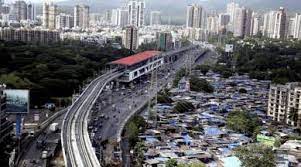
The report, titled “Financing India’s Urban Infrastructure Needs: Constraints to Commercial Financing and Prospects for Policy Action” was released by the World bank.
- The report underlines the urgent need to leverage more private and commercial investments to meet emerging financial gaps.
Highlights of the Report:
- India will need to invest USD 840 billion over the next 15 years into urban infrastructure if it is to effectively meet the needs of its fast-growing urban population.
- By 2036, 600 million people will be living in urban cities in India, representing 40% of the population.
- This is likely to put additional pressure on the already stretched urban infrastructure and services of Indian cities – with more demand for clean drinking water, reliable power supply, efficient and safe road transport amongst others.
- Currently, the central and state governments finance over 75% of city infrastructure, while Urban Local Bodies (ULB) finance 15% through their own surplus revenues.
- Only 5% of the infrastructure needs of Indian cities are currently being financed through private sources.
- There has also been slow implementation performance by states and Urban Local Bodies (ULBs) on several of the Centre’s flagship Urban Missions such as the Smart Cities Mission (SCM) and the Pradhan Mantri Awas Yojana (PMAY) for instance— due to constraints on implementation capacity at the city level.
- ULBs across India have so far executed only about one-fifth of the cumulative cost or outlay of approved projects under SCM and Atal Mission for Rejuvenation and Urban Transformation (AMRUT) over the last six financial years.
- Public Private Partnership (PPP) transactions for urban infrastructure in India registered a marked decline in the last decade both in monetary value and transaction volume— 124 PPP projects have been awarded in the urban sector since the year 2000 worth a total cost of USD5.5 billion.
- However, PPP project awards have declined substantially after a “brief but substantial spike” between the years 2007 and 2012 when most of these projects were awarded.
- Only one-third of all PPP investments awarded since 2000 came in the last decade including 55 projects worth USD17 billion,
Leadership For Industry Transition (LeadIT) Summit : India And Sweden
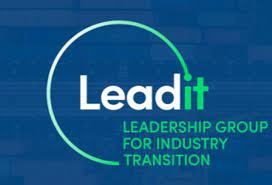
India and Sweden hosted the Leadership for Industry Transition (LeadIT) Summit, on the sidelines of COP27 at Sharm El Sheikh in Egypt.
- The summit was followed by the public launch of the LeadIT Summit Statement 2022 in the India Pavilion at COP27.
Highlights of the Summit:
- LeadIT members re-emphasized the commitment to pursuing the low-carbon transition.
- The event included roundtable discussions that focused on finance and other cross-sectoral issues and views on the requirements for successful low-carbon transitions.
- The members also committed to providing technical assistance to new members and emerging economies. The importance of de-risking investments in the transition of heavy industries in emerging and developing countries was also highlighted.
- The summit concluded with the adoption of the summit statement by the members of LeadIT .
LeadIT:
- The LeadIT initiative lays specific focus on hard to abate sectors that are key stakeholders in the global climate action and require specific interventions.
- It gathers countries and companies that are committed to action to achieve the Paris Agreement.
- It was launched by the governments of Sweden and India at the UN Climate Action Summit in 2019 and is supported by the World Economic Forum.
- LeadIT members subscribe to the notion that energy-intensive industries can and must progress on low-carbon pathways, aiming to achieve net-zero carbon emissions by 2050.
- The total membership of LeadIT is 37 including countries and companies together.
- Japan and South Africa, the latest members of the initiative.
National Press Day 2022:
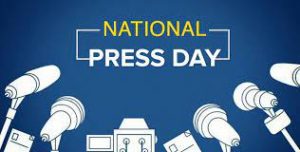
The day is observed on 16th November every year to commemorate a free and responsible press.
- It was on this day that the Press Council of India started functioning as a moral watchdog to ensure that the press maintains high standards and is not fettered by any influence or threats.
- Since the year 1997, the Council has commemorated the day in a significant way through seminars with relevant themes.
- The Press Council of India was first set up in the year 1966 by the Parliament on the recommendations of the First Press Commission.
- It is a statutory body functioning under the Press Council Act, 1978.
- Objective: Preserving the freedom of the press and of maintaining and improving the standards of press in India.
- It is a quasi-judicial authority. It adjudicates the complaints against and by the press for violation of ethics and for violation of the freedom of the press respectively.




